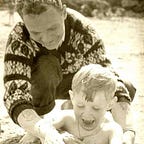Teaching Entrepreneurship in High School
The Importance of Leaving School with Skills and Competencies for the 21st Century
I’ve been teaching an entrepreneurship elective for the past 5 years at Marymount School of New York. My interest in entrepreneurship grew out of my passion for the design thinking process. And, of course, design thinking is a big part of entrepreneurship.
My first attempt at designing an Entrepreneurship elective was based on the book “The Designing for GROWTH Field Book” (a step-by-step project guide) by Jeanne Liedtka, Tim Ogilvie, and Rachel Brozenske. This is a great book packed with tools, templates, and resources to design a course from the ground up. It poses the 4 Questions:
What is?
What if?
What wows?
What works?
Taking students through this step-by-step process immerses them in the entrepreneurial mindset, which is a big part of being an entrepreneur. And even if they never innovate a new product system or service in the future, they will be able to use the skills and competencies learned in their day-to-day.
In my second iteration of this course, I wanted to bring it into the realm of Social Entrepreneurship, a “process by which individuals, startups and entrepreneurs develop and fund solutions that directly address social issues”. I stumbled upon this incredible resource at Yale School of Public Health, a full-blown curriculum called “See Something, Do Something, " including slides, lesson plans, worksheets, and more. I added elements of this to my second iteration of the course.
You can also find tons of free resources and full-blown courses (many for free) on Coursera, EdX, and Udacity. If a student wanted to be self-directed in their learning, you could just point them to one of these courses. Stanford offers free Entrepreneurship classes, and MIT Open Courseware does too. Here are some more additions: Lean LaunchPad, INC., ART OF THE START, and SUNDANCE.
I continue to iterate on this course every semester. I have also added the Business Model Canvas (BMC), invented by Stratagyzer (Elements of Entrepreneurship ); a previous Medium post by me goes into detail about the BMC methodology. The BMC is a shared language for describing, visualizing, assessing, and changing business models.
Another useful tool I use is the Value Pyramid, which introduces the concept of “value proposition” and helps the students understand the value in any product service or system they are designing.
No entrepreneurship class can omit the teaching of the creative problem-solving methodologies “design thinking” and ‘design abilities”. I go into these methodologies in more depth here.
Another component of this class was taking the students to Fast Company’s Yearly Innovation Festival. Fast Company offered free entry to students and faculty up until a few years ago when they upped the age limit to 18 and over, which put an end to that great field trip that the students loved.
Another important component of an entrepreneurship class is getting real entrepreneurs in front of the students. This I do by pulling from my network. I’m always on the lookout for guests for my class.
Also, these three organizations that work outside of schools run by three of my friends and colleagues, DoingWit founded by Sarah Hernholm , Spike Lab founded by Lloyd Niemetz, and Cambio Labs founded by Sebastian Martin are excellent ways to introduce students to the entrepreneurial mindset.
Teaching the entrepreneurial mindset is paramount in K-12 education today. Why wait? Don’t hesitate to contact me if you want to take more about setting up entrepreneurship programs in your schools. Click here to see some entrepreneurship courses I’ve designed.
